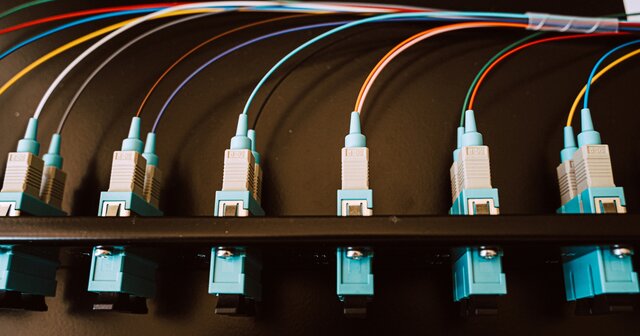

Michiganders without access to high-speed internet are still waiting for internet service funded by the Broadband Equity, Access and Deployment program through the Michigan High-Speed Internet Office. The Michigan High-Speed Internet Office recently said in testimony before the legislature than no one will be connected using BEAD funds until at least 2026.
Part of the problem with the office's distribution of the funds is is that MIHI heavily favors connecting homes and businesses with fiber, the most expensive current delivery technology. Guidance from the agency shows that applicants who want to use a material other than fiber must show that “providing end-to-end fiber service is deemed excessively costly.” The guidance also mandates that plans for not using fiber “should only be based on extreme impracticability and unreasonableness of end-to-end fiber deployment due to geography, topography, or excessive costs.”
Fiber makes it possible to deliver service at one gigabyte per second, but very few users need speeds anywhere near that fast.
“Everyone should have the opportunity to have broadband,” former Federal Communications Commission Chief Economist Michelle P. Connolly explained in a 2023 report. “But does closing digital divides require that every household in the U.S. have access to the highest tiers of Internet service? Should we be spending money to make sure that as many households as possible have the opportunity to buy a Lamborghini (even if that means leaving many without an opportunity to buy any car), or should we be spending money to make sure that as many households as possible have the opportunity to buy a working car that can take them from point A to B?”
Even worse, many of those not yet connected may not even want Lamborghini internet, preferring a sedan, minivan, or truck instead. Fiber internet is fast, but speed is not necessarily what internet users really care about.
Fiber may not be the best technology for users in remote areas, who tend to be the people who are likely not to be connected. One particular problem is that fiber lines are delicate and more susceptible to physical damage. If fiber lines are cut, they can’t be twisted or crimped together like traditional copper cables. Instead, damaged fiber line must be removed and spliced with specialized, expensive equipment used by skilled technicians. While MIHI’s BEAD grants may cover the up-front costs of fiber, they do not provide for the higher future repair costs associated with maintaining fiber. This makes it more likely that fiber laid over long distances with BEAD funding will be uneconomical to repair. Less-expensive copper wire that is easier to maintain likely will serve the needs of most internet users in remote locations better than fiber.
Other households may prefer satellite internet to fiber. The satellite service Starlink is becoming popular with campers, RVers, and boaters because they can take their internet service with them as they travel. So long as they avoid places with obstructed views of the sky, they can stay connected. They can use their satellite internet even as they cross international borders or go places like the middle of Lake Michigan where other internet options are not available. These internet users would rather have satellite internet that goes where they go rather than a fiber connection that is super-fast but fixed to one location.
By committing to expensive fiber, MIHI is picking an expensive technology that may not actually be the “gold standard” in the near future. Fiber is certainly not a “future-proof” technology, as MIHI often claims. Indeed, fiber may be de-throned as the fastest internet technology before we know it. Technologies that could replace fiber have been discussed since at least 2019. One new technology currently being tested is “free-space optics,” which uses lasers to transfer data through the air.
Government bureaucrats who have never run internet businesses simply are not qualified to be dictating technology decisions. The Michigan High-Speed Internet Office should drop all mandates and preferences for fiber and let providers decide which technology is best suited for their areas. Even better, MIHI should try to replace the cumbersome BEAD application process with a voucher program that lets unserved internet consumers decide which technology they want to use.
Permission to reprint this blog post in whole or in part is hereby granted, provided that the author (or authors) and the Mackinac Center for Public Policy are properly cited.
Get insightful commentary and the most reliable research on Michigan issues sent straight to your inbox.

The Mackinac Center for Public Policy is a nonprofit research and educational institute that advances the principles of free markets and limited government. Through our research and education programs, we challenge government overreach and advocate for a free-market approach to public policy that frees people to realize their potential and dreams.
Please consider contributing to our work to advance a freer and more prosperous state.

Donate | About | Blog | Pressroom | Publications | Careers | Site Map | Email Signup | Contact